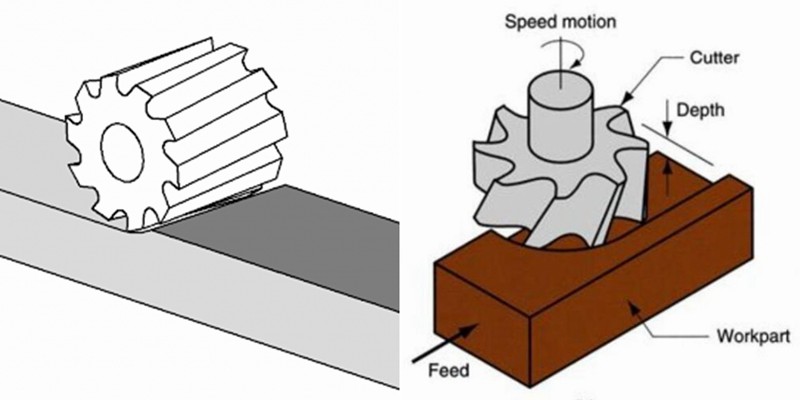- June 28, 2024
Plain milling is a fundamental process used in various industries due to its accuracy and high productivity. This milling machining process is used to remove material from a workpiece’s flat surface.
This article will give a detailed explanation of the concept of plain milling, discussing its types, pros and cons, common cutters used, as well as its applications.
What is Plain Milling?
Plain milling is the process of removing material from a flat surface using a rotating cutter that has multiple teeth to give a smooth finish. Also known as slab milling or surface milling, the process involves fixing the workpiece to the bed of the machine while a spinning axis removes the material from the top face of the material.
The aim of plain milling may vary with several purposes, but the main purpose is to take away a part of the material from a workpiece. In doing so, you create a flat surface parallel to the tool’s axis. It also helps in the production of smooth and precise surfaces for parts.
Types of Plain Milling Cutters
The plain milling process is more about the cutters than anything else. It is the distinguishing factor between the milling types. In this section, we will discuss two types of plain milling cutters: heavy-duty and light-duty plain milling cutters.
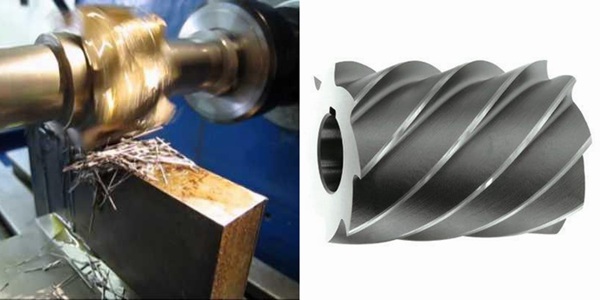
Heavy-Duty Plain Milling Cutters
These types of cutters provide a better helical angle than light-duty cutters, and they also have fewer teeth. Heavy-duty cutters are mostly employed on either vertical or horizontal machines with a rigid setup for more precision.
The helical angle of this type of milling cutter ranges from 25 to 45 degrees. It is suited to removing larger amounts of material than light-duty cutters due to their fewer teeth.
What’s more, the feature of heavy-duty plain milling cutters gives a more coarse cut, which is better for heavier materials. Thus, this cutter mainly gives a better shaping finish while reducing the amount of vibration.
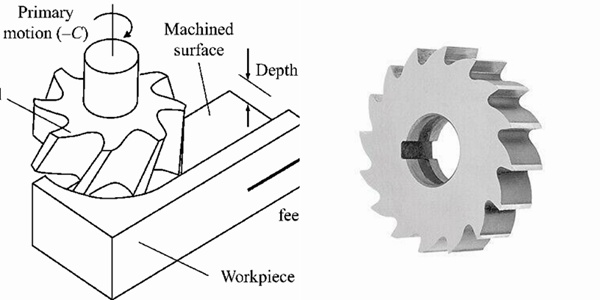
Light-Duty Plain Milling Cutters
These light-duty milling cutter tools have more teeth but a lesser helical angle. Therefore, they come in handy for smaller milling machines used to achieve a finer finish. This means that they function best when there is a smaller removal of material and higher precision needed. Light-duty cutters give more precise control and a smoother surface finish.
Standard Setup and Process for Plain Milling
The plain milling machining process involves a series of precise procedures that result in the cutting and finishing of the workpiece. Here is the standard setup and process for plain milling operations.
Determine Milling Types
One of the most important steps of the plain milling process is selecting a suitable method or machine. Horizontal plain milling works best for heavy stock removal on larger surfaces, while vertical plain milling is suitable for better precision cuts on smaller surfaces.
Workpiece Setup
After choosing the right method, the next step is setting up the workpiece for an effective plain milling process. The workpiece should be secured properly to the milling table or workbench to avoid shaking during vibration. Use a vise or an adjustable angle plate to hold down the piece.
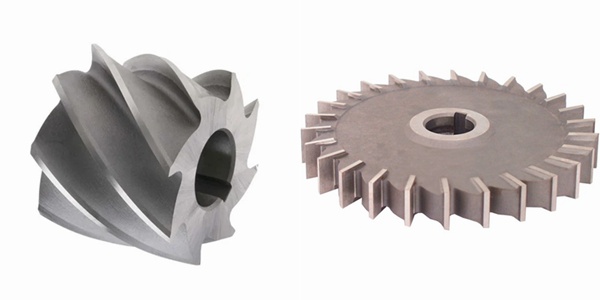
Selecting the Correct Cutter
As explained above, heavy-duty cutters should be used for a larger amount of material to give a coarse finish, while light-duty cutters would give a fine finish on a smaller workpiece.
Calibration and Alignment
Calibration involves checking and adjusting the precision scales of the machine as well as its encoders to make sure it’s accurate for the measurement of XYZ axes. Alignment on the other hand ensures that the movements of the machine are perfectly parallel and perpendicular to each other to prevent cutting errors.
Cutter and Toolholder Alignment
This process involves placing the milling cutter in the right position to align with the tool holder. It helps to enhance the accuracy of the machine and also guarantees an error-free cutting process.
Start Milling Operations
Milling operations are processes that help to maintain efficient and precise plain milling procedures. They include setup and tool path selection, initiating and monitoring cutting cycles.
Advantages of Plain Milling
Industries like engineering, manufacturing, and automotive production function on the products from plain milling. Here are their advantages.
A Wide Range of Materials
The plain milling process functions on a wide range of materials. It can be used to remove materials from metals, alloys, and plastics. This makes it suitable to several industries.
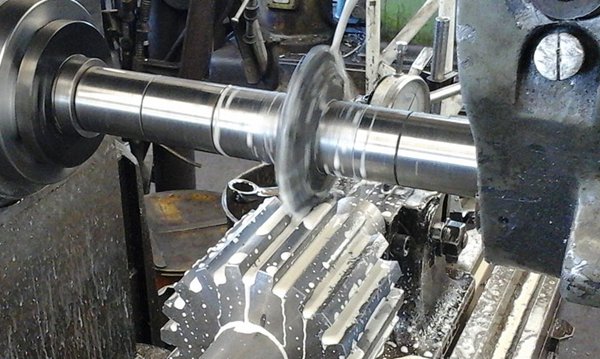
Cost Efficiency
The plain milling process guarantees a speed and productivity rate that makes it cost-efficient for volume production. It reduces production time and material waste.
Better Precision and Accuracy
The plain milling process provides accurate removal of material from a workpiece through precise control of the cutting process. It minimizes variation and reduces vibration for a more precise finish.
Automation and Faster Setup
The setup process for plain milling is easy and simple, taking less time and giving more productivity. Moreover, the process is even more automated than most cutting processes, which offers seamless integration with other CNC machines.
Tips for an Effective Plain Milling Process
For an effective plain milling process, here are some considerations necessary for a successful plain milling process.
Please note, ensure that there is good stability and fixation in the workplace before you begin any plain milling process. Use clamps, vices and fixtures to prevent shakes and vibration during plain milling.
Maintain Components is Necessary
It is essential to maintain and sharpen the cutter used in the plain milling process before and after the procedure. This practice helps to prevent workpiece damage, minimize wear on the tool, and ensure precise cutting.
Adjust the Cutting Speed, Feed Rates, and Depth of Cut
It is important to always adjust these parameters to optimize the results. Adjust the cutting speed of the plain milling cutter to suit the workpiece material, ensure the feed rates match the cutter design, and set the depth of cut to suit the desired finish.
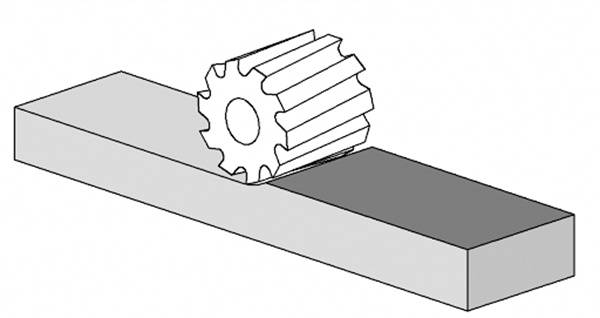
Avoid Milling Defects
The best way to maximize efficiency is to avoid plain milling mistakes. Thus, ensure to always adjust cutting parameters to suit the material, and use stabilizing tools and setups to prevent vibration and tool deflection.
Applications of Plain Milling
Plain milling is used in many industries in the production of tools and to speed up overall operations. Industries like aerospace, automotive, construction, and medical devic all benefit from this milling process.
Aerospace Industry
Plain milling comes in handy for the production of aircraft parts in the aerospace industry. For example, fuselage sections, wings, and engine blocks are products of plain milling. It also helps in the manufacturing of gears, curved heads, and structures that make up the aircraft.
Automotive Industry
Plain milling is one of the bedrock operations in the automotive industry as it helps in the manufacturing of automobile parts. The process helps in the high-volume production of engine components and finishing fibers. It also helps to produce gearboxes and cylinder blocks.
Construction Industry
The production of large structural parts in the construction industry is done with the plain milling process. Components like plates, beams, and metal rollers are all products of this high-precision process.
Medical Industry
The plain milling process is used in the manufacturing of many medical devices. The high precision of the process is required when making most medical instruments and implants.
Compare Plain Milling to Other Milling Operations
There are other milling methods aside from plain milling in the entire machining operations. Some of them have similar functions to plain milling, while others differ in overall functionality. Moreover, they also differ in precision, results, and applications. Here is how plain milling compares to various milling processes.
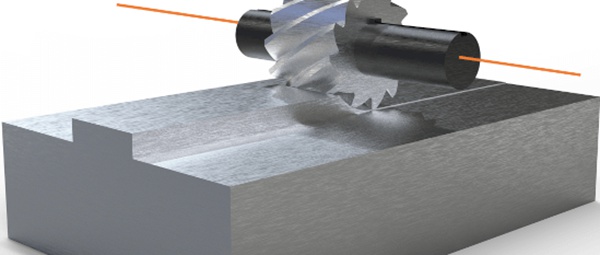
Plain Milling vs. Face Milling
Face milling, although similar to plain milling, has a different approach to cutting materials. It aims to cut off materials from a flat surface that is perpendicular to the cutting axis, while plain milling cuts on a parallel axis. Therefore, face milling is ideal for large surface removal, while plain milling is better suited to precise cutting and achieving a better surface finish.
Plain Milling vs. End Milling
Plain milling cutters have cutting teeth either on the circumference, end, or both. However, the end milling cutter has a cylindrical shape, which it uses for operations. End milling is best suited for pocketing and profiling, while plain milling gives the best surface finish and precision. Thus, you use plain milling for large surfaces, while end milling is best for complex shapes.
Plain Milling vs. Profile Milling
Profile milling, like end milling, gives a specific shape finish while plain milling works on a large flat surface parallel to the machine’s X-Y plane. Furthermore, profile milling The cutter moves along a predetermined path, following the desired shape or profile. On the other hand, in the plain milling process, the cutter moves in a straight line, perpendicular to the workpiece’s surface.
Additionally, profile milling works great for milling complex profiles, curves, or irregular shapes while plain milling is used for machining large flat areas, such as faces, bases, or shoulders.
Start Your Project with WayKen's Milling Services
Leave all of your milling worries to the experts. WayKen is your expert for CNC milling services. Be it prototypes or low-volume production, we can offer custom-milled plastic and metal parts to meet strict standards. Also, we have types of inspection equipment to ensure your products with high quality and accuracy.
Conclusion
Plain milling is a simple process that works for the removal of material from a large workpiece surface with the help of a rotating cutter. Thus, understanding the process in its entirety involves knowing the tools, applications, and procedures essential for effective machining.
FAQs
What is the main difference between plain milling and face milling?
Face milling is best for large surface removal, while plain milling is better suited to precise cutting and better surface finish.
Is choosing the right plain milling cutter important?
One of the most important steps in the plain milling process is selecting the most suitable cutter. It improves the precision and accuracy of the surface finish.
Is plain milling expensive?
No. Plain milling is not as expensive as other milling methods, like slot milling, because it uses standard tools.

